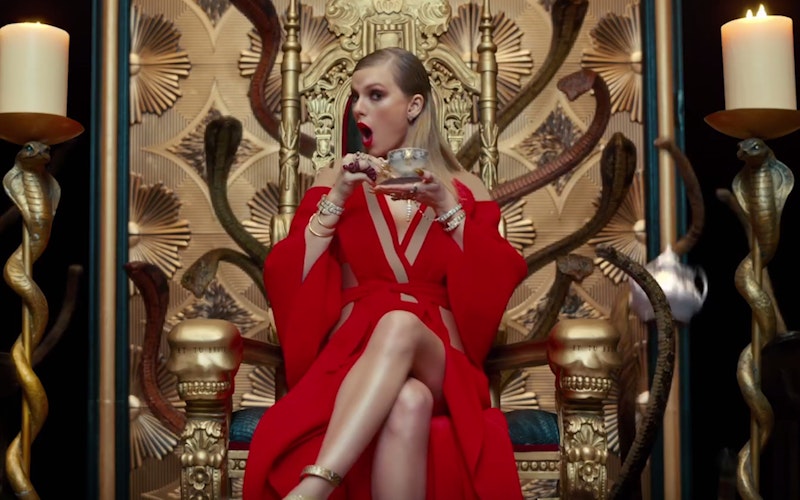
Music
Look What You Made Me Do: John Calvin by Way of Taylor Swift
Reactions to Taylor Swift’s new single, “Look What You Made Me Do,” have been polarizing, to say the least. Though some have lauded this darker version of Swift, the trend seems to be towards the negative. The first time I watched the music video, I wasn’t sure if the song was, as Vulture columnist Mark Harris wrote, “an anthem that turns the abrogation of personal responsibility into a posturing statement of empowerment” or a self-aware parody. My best guess is that Harris is correct.
What initially struck me was the sheer blandness of the song. There isn’t much emotion to be found in it. Swift’s vocal performance is subdued in the opening verses, with pitch changing only slightly throughout. She begins to show some feeling and vocal range during the pre-chorus (“But I got smarter…”), her voice building in volume and intensity. But then she moves into a banal and repetitive chorus. This is perhaps the most monotone “hook” in modern pop-culture memory: a robotic restatement of “look what you made me do,” eight times, with just enough variation in syncopation to make it “catchy” by purely scientific standards.
Swift’s vocal performance—verging on undead—matches the song’s motif of death and resurrection. The video opens with a zombie-like Swift emerging from a grave marked “Here Lies Taylor Swift’s Reputation.” She claims in the pre-chorus: “I rose up from the dead / I do it all the time.” And in what is either the video’s most self-indulgent or self-aware moment, midway through, she receives a phone call and responds, “I’m sorry, the old Taylor can’t come to the phone right now. Why? Oh, cause she’s dead.” The vocal delivery, again, is flat.
“We always seem to ourselves righteous and upright and wise and holy; this pride is innate within us.” That’s John Calvin, writing in his Institutes about a life lived without the knowledge of God. “Righteous, Upright, Wise, and Holy” could be an alternate title for Swift’s song. She lashes out at those who have tarnished her reputation, time and again. (Reputation being the title of her forthcoming record.) “I am blameless,” the song seems to claim. “Look at what [insert Swift’s latest, rumored celebrity rival] did to me.”
'Righteous, Upright, Wise, and Holy' could be an alternate title for Swift’s song.
Calvin would contend that such blaming of others can often be used to mask our own sorry state: “For, because all of us are inclined by nature to hypocrisy, a kind of empty image of righteousness in place of righteousness itself abundantly satisfies us.” For Calvin, knowledge of God and subsequent spiritual improvement is impossible until we recognize and own our sins. But personal culpability doesn’t appeal to us any more than it apparently appeals to Swift.
The undead imagery of the video for “Look What You Made Me Do” is apt. Zombies are a poignant illustration of a life lived under sin. They are alive only in the most basic sense of the word. I’m reminded of Paul’s claim that “you were dead in your transgressions and sins” before God “made us alive with Christ. … it is by grace you have been saved.” Swift claims that she “rose up from the dead” and does it “all the time,” but as is seen in the video, where many previous “Taylors” are shed, she has only been born to meet another death.
Taylor Swift has certainly been wronged by others, as her testimony during her recent sexual assault lawsuit against a radio DJ made clear. And the Bible certainly calls us to speak out against true injustice when we encounter it. But in this musical dramatization of the wrongs that her public image has suffered during various celebrity feuds, Swift positions herself as incapable of any wrongdoing. She is only the blameless victor. There is an echo here of the self-righteousness that Calvin considered to be spiritually deadly. “Look What You Made Me Do" can be seen as a celebration of self-delusion. And as Calvin reminds us, “without knowledge of self there is no knowledge of God.”
Topics: Music, Culture At Large, Arts & Leisure